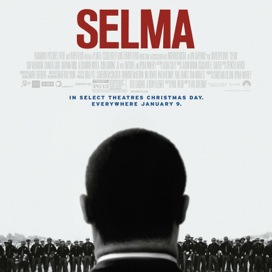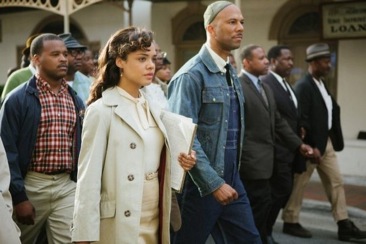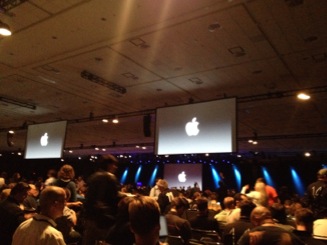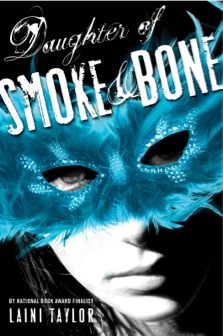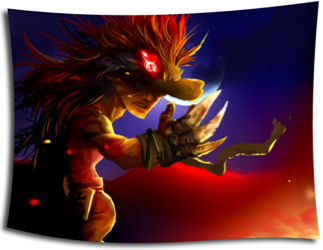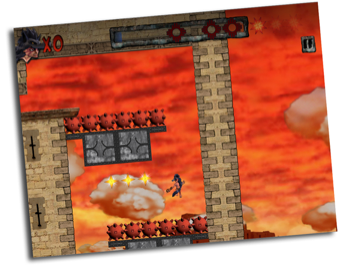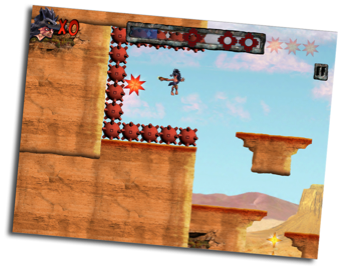The X
"Selma" Review
15/01/15 22:55 Filed in: Movie Review
Ava Duvernay's Selma is one of the best bio pictures produced in a while. For most people, it's difficult to watch a film of this kind. We know the outcome for its subject and we know what type of things to expect in a film like this - lofty speeches, brutal beatings and a good dose of historic footage. Instead of retreading old ground seen every February on the History Channel, the director chose a different route. This film focuses on events leading up to the 1965 march from Selma to Montgomery Alabama (about a 54-mile trip) which eventually led to the Voting Rights Act. What I really enjoyed about this film was that we saw MLK as a normal human being. We saw his fear and his passion co-existing side-by-side. And more importantly, we finally had a chance to get to know Coretta, which gives a better understanding of how MLK was able to achieve what he did in such a short amount of time. Behind every strong man, as they saying goes. Coretta was holding it down at home and supported him through thick and thin despite his less popular indiscretions.
While there has been some criticism of the portrayal of Lyndon Johnson, I felt it was accurate given the time. As president, Johnson seemed intent on supporting MLK but would not press forward without massive public opinion supporting him. The shooting death of Jimmy Jackson (who was African American) by Alabama State Trooper, James Fowler, was not enough to motivate Johnson to act. (Interestingly, Jackson’s death echoes police sentiment toward African-American males still prevalent today, half a century later). Meanwhile, the stark contrast of the public outcry that followed the death of James Reeb, a white minister from Boston who’d also come to support MLK during the March, revealed the nation’s covert racism. Reeb’s family received a phone call from the president but there was no such call for Jackson’s family.
I also think it was important to have a relatively unknown female director handle the subject matter. Duvernay avoided being heavy-handed with the violence and offered a well thought out balance between the female and male characters. Even Oprah Winfrey managed to just come across as an activist fighting for a cause instead of pulling us out of the story. The film made me proud of where we've come but also reminded me that we have a long way to go. Choices like not calling the film “MLK” and highlighting the contributions of so many others to this movement make it clear that this isn’t just a black issue - it ’s a human rights issue. If you haven’t seen Selma make it a point to do so immediately. It’s an important film that demonstrates the power of free speech and the courage of those who believe wholeheartedly in a cause.

While there has been some criticism of the portrayal of Lyndon Johnson, I felt it was accurate given the time. As president, Johnson seemed intent on supporting MLK but would not press forward without massive public opinion supporting him. The shooting death of Jimmy Jackson (who was African American) by Alabama State Trooper, James Fowler, was not enough to motivate Johnson to act. (Interestingly, Jackson’s death echoes police sentiment toward African-American males still prevalent today, half a century later). Meanwhile, the stark contrast of the public outcry that followed the death of James Reeb, a white minister from Boston who’d also come to support MLK during the March, revealed the nation’s covert racism. Reeb’s family received a phone call from the president but there was no such call for Jackson’s family.
I also think it was important to have a relatively unknown female director handle the subject matter. Duvernay avoided being heavy-handed with the violence and offered a well thought out balance between the female and male characters. Even Oprah Winfrey managed to just come across as an activist fighting for a cause instead of pulling us out of the story. The film made me proud of where we've come but also reminded me that we have a long way to go. Choices like not calling the film “MLK” and highlighting the contributions of so many others to this movement make it clear that this isn’t just a black issue - it ’s a human rights issue. If you haven’t seen Selma make it a point to do so immediately. It’s an important film that demonstrates the power of free speech and the courage of those who believe wholeheartedly in a cause.
Comments
WWDC 14, iOS 8 and Dr. Dre
03/06/14 09:16 Filed in: Misc.

As some of you know, aside from being part of the AllGoodThings.TV family, I’m also a game producer so this week, I was invited to the Apple developer conference in San Francisco at the Moscone Center.
We arrived bright and early Monday morning to pick up our passes and the check-in process was Swift. They started the day baring gifts as well - a cool WWDC 14 jacket and a gift certificate for $25 bucks to iTunes. Then waited in a line that wrapped around the corner with 1500 other developers to hear the Tim Cook’s Key Note address.
After a brief wait, the lights dimmed and the Key Note presentation began. They started with a video of bright, happy Apple-styled people from around the world talking about how many cool apps there were in the iTunes App store. You know these vids where they make a point to show lots of ethnicities. I ain’t mad at ya, Apple. Cool beans. Then Tim Cook walked out on stage and started right into his routine. While a large portion of any of these types of presentations is pure propaganda, I must say that Apple and the iPhone remain head and shoulders above their competition. The square-jawed SVP of Software Engineering, Craig Federighi, was the highlight of the show displaying the only thing that truly mattered – Hand off, which is a component of their brand new feature Continuity. Simply put, if you start a document on your phone or iPad you can seamless continue working on it in real-time on your laptop. They demoed this live using Safari as well and it was pretty awesome. Other stand out features were the ability to answer your iPhone on your mac lap top even if the actual phone is ringing in another room. You can also make calls from your laptop via your phone as well. Additions to smart type on the phone now predicts what you are about to text so that you communicate much faster and you can now send voice memo responses to text messages without touching the phone. I can’t remember exactly what feature was being demoed when Craig called Dr. Dre but I wasn’t too crazy about him being referred to as an employee. Dude, it’s Dr. Dre straight out of Compton. He ain’t nobody’s employee.
Ultimately, Apple really upped their game making it much harder not to choose an iPhone as your mobile device. I’m looking forward to the rest the conference and learning how to make better mobile apps especially now that there seems to be a real focus on helping developers optimize their app experiences. Kudos. I think Steve Jobs would be proud.
- The X
Daughter of Smoke and Bone – Audio Book Mini Review by The X
10/04/14 00:15 Filed in: Book Reviews
It seemed like after The Hunger Games released and followed with an even more successful film there’s been a rash of teen books gracing the shelves featuring power heroines. The talented young Veronica Roth pinned the Divergent series, the Brit Samantha Shannon has introduced us to The Bone Season and the pink-haired Laini Taylor captivates with the Daughter of Smoke and Bone trilogy. Well, I’m not just saying this because Laini is from California or because she has published a comic book or that her husband’s a comic book artist – I truly think her series is my favorite so far – granted, I haven’t completed The Bone Season yet – and it’s good as well. The way Laini describes the moody misty landscape of Prague, the protagonist Karou’s relationship with the characters in her sketch book and the bond she shares with her best friend and tiny puppeteer is mesmerizing. Khristine Hvam narrated characterizations truly draw you into the story. I can’t tell you how many times I’ve listened to the opening of this book over and over again because I love the world that she’s created. This is a book about the eternal struggle that exists between good and evil as seen through the magical worlds of Angels and Demons interwoven within the human world. There’s humor, teen love, art classes, Poison Kitchen and teeth that are collected for reasons so interesting that I won’t tell you here and spoil the surprise. I’ve read and listened to a lot of books over the years and this book and the series is one of the best yet. And I’m not just saying this because Laini’s a cute lady. Check it out and recommend it to a friend. The sequels are Days of Blood and Starlight and Dreams of Gods and Monsters (released April 8th 2014). The film rights have already been scoped up so a script is in the works.

After Earth Does Not Suck...
17/06/13 19:45 Filed in: Movie Review
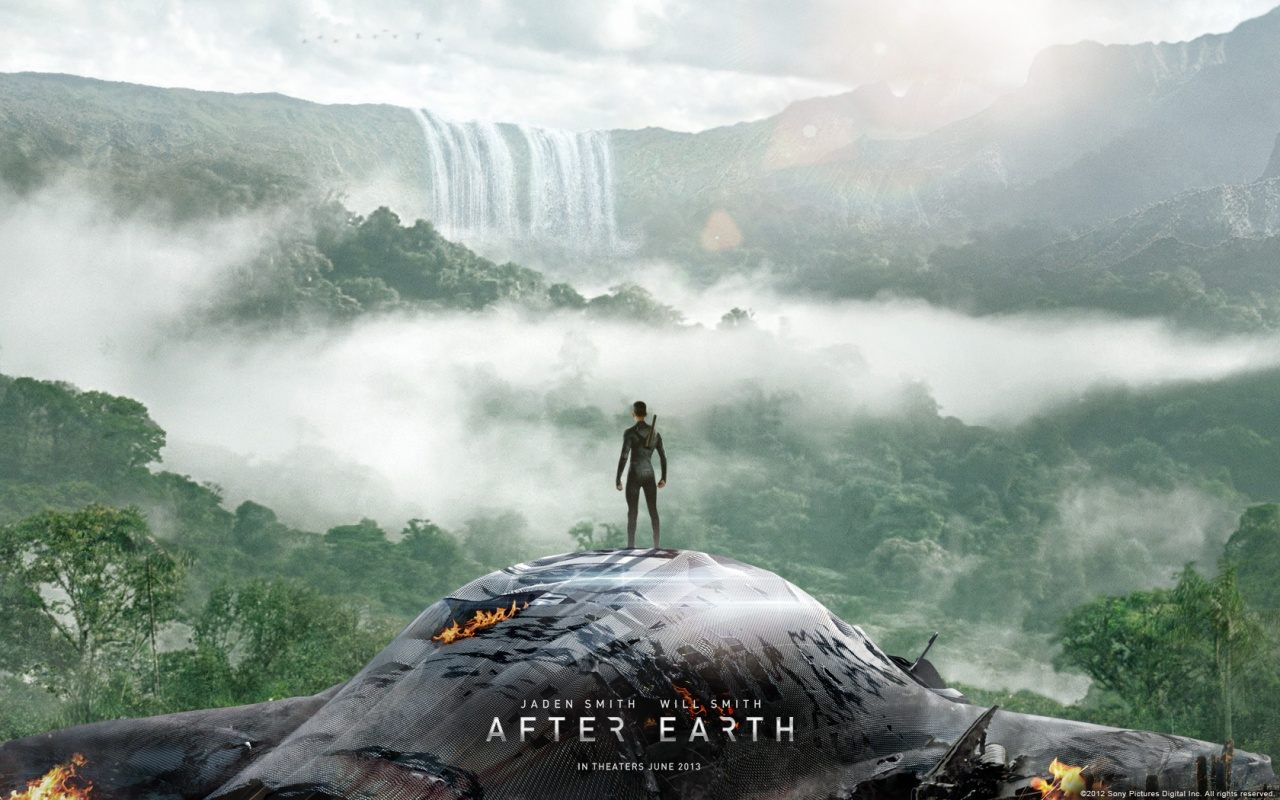
One of the problems with Rottentomatoes is that it's become the lazy man's way of deciding whether to wait for the video release or to shell out the cash for the big screen experience. But sometimes its simple algorithm of consensus is ultimately wrong. If you’re going to After Earth to see a whole lot of whizz bang special effects you will be very disappointed. That’s not at all what this story is about. This is a coming of age story about a young man having to overcome fear. Clearly the studios wanted an Avatar-esque, big summer event film but if they actually read the script they would have easily seen that After Earth even doesn’t pretend to be that. Yes, in the trailer we see a spaceship exploding and crash-landing on a future version of Earth. Yes, it’s starring action hero Will Smith. Yes, there are some cool looking creatures but that’s it. The truth is that M. Knight Shyamalan created a heartfelt story about a stoic father’s relationship with his strong-willed but frightened son. This is a great family film because there’s no gore, nudity, profanity or cheap thrills. It actually carries a spiritual theme about living in the present, making your own choices and not being overcome by your own perceived fears. The problem is that people want to see Will Smith play his Men In Black role and in After Earth he plays an injured soldier named Cypher who only cracks a single joke in the entire film.
In truth the film is more akin to The Pursuit of Happyness…in space. The strength of the narrative is that Cypher doesn’t overshadow the story of his son, Kitai. Despite what Owen Gleiberman suggests, Cypher isn’t an Obi Wan character. He’s much more like Sgt. Al Powell in Die Hard – a guide on the radio. But there are some other truths about this film that make it an important milestone. This is the first time we’ve ever seen a young black male star in a big budget sci-fi film and not get killed in the first five minutes. Not only that – he’s got a father who is a positive role model – and a mother who isn’t angry but supportive. This may not seem important to a lot of people but this is HUGE for young black kids to look up on billboards and see not one but two faces that look like them who aren’t cooning. The only other time we’ve seen this something similar is Karate Kid – also thanks to Will Smith. Kudos to Will and M. Knight for making this happen. Structurally, the story is sound but it’s not about a lot of crazy shock value so you’ve gotta get past that. Where Oblivion was truly a disappointment in its conclusion and plot reveals, After Earth strives to create something that sticks to your bones even without any huge surprises. It’s relatively slow and extremely steady with a cast that all deliver solid though not groundbreaking performances. This film’s weakness comes in its inability to push the boundaries of the genre or of the actors. I’m still waiting for a film to challenge The Matrix in terms of presenting something fresh, new and exciting. Jaden isn’t going to win any awards with this one but he’s believable. This is where the script could have used the wit from someone like Shane Black or Joss Whedon. Instead Shyamalan, Smith and Gary Whitta take his very cautious approach to dialogue, rarely having his characters’ utter words that are truly insightful or passionate although you can sense that the intent is there. In the end, After Earth offers an organic vision of the future with some of the most unique spacecraft designs to date. As with all of Shyamalan’s movies, the craftsmanship is apparent in every frame and there’s meaning under the surface that may take a while longer to resonate with general audiences.
So don’t set expectations low going into After Earth, just don’t expect what the trailer tries to sell. The film does play out like a video game with a distinct goal to reach and a timer for it to be reached but there are some nice moments that would have been much more well received in a time when films like 2001 allowed for sci-fi to be more than just 90 minutes of extended fight sequences and explosions.
Exclusive Interview with Team Rubber Bandito
26/03/13 23:22 Filed in: Video Games

Recently The X from AllGoodThings.TV had a chance to catch up with LA-based indie game developer, Team Rubber Bandito (aka Cold Dish) for the week of the Game Developers Conference. Individually having worked on such high profile Disney and Nickelodeon titles, these developers have banded together to produce an eclectic platforming experience unlike any other available now on iOS and Android systems. Check out their interview here:
AllGoodThings.TV Interview with Team Rubber Bandito
AGT: Tell us a little about Cold Dish and what made you start working in mobile development after such games as SpongeBob and Pixar's Up on console?
RB: Most of us knew each other from working on the games you mentioned and more. As the games industry (along with everyone else) fell on tough times, there was a general surplus of talent at any given time. That, combined with so few barriers to publishing on mobile, made it plausible to self-fund a mobile game. We needed at least a few experienced developers willing to devote their free time towards an original product. A few turned out to be 20 in the end.
AGT: How did you develop the concept for Rubber Bandito and how many people were involved in the process?
RB: Co-Director, Pat, had a concept very early on (even before the release of Angry Birds) of a platformer controlled by slingshotting the main character around. The aesthetics and story flowed from that foundation. A small art team jumped on to work with the directors to do concepts and really solidify what the game was. At the end of that process we had Steampunk inspired enemies and a badass hero with a bear’s claw strapped to his hand. We walk through some of that process on our development blog and visually in a book for Kickstarter backers, “The Art of Rubber Bandito”.
The whole team and their roles are listed on our website and we will have Facebook updates about team members this week. Many of them are doing some really cool work outside of this game.
AGT: Tell us about the core game mechanic and what games if any inspired your development/design approach?
RB: We set out to do a condensed, focused, mobile experience that was still very classic like a lot of the Nintendo GBA games we used to play. Those games were great experiences that held up to console games but were also uniquely portable/mobile. There didn’t seem to be enough games like that on phones and tablets.
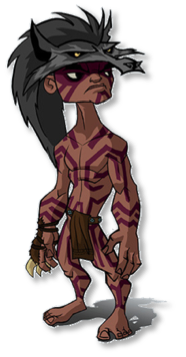
With the player, we specifically wanted quick jumping, precision, freedom, and something that allowed great control once mastered. Those are the elements we felt were worth striving for.
AGT: A lot of people are moving into developing mobile games now. What do you see are the biggest differences between console and mobile development?
RB: One great thing about mobile is that you can find so many different and unique ideas on the market. It's currently easier on mobile for the creators to put out original ideas for people who are tired of the same type of game every year.
There are no barriers to getting on the stores, no limited shelf space, and no thick technical requirement checklists. Projects are generally smaller in scope and size and therefore budget. A higher frequency of new games allows for more design iteration.
The obvious technical differences are screen size, device specs and different device resolutions. As it turns out, those are actually not really so different because we have to deal with those differences in console development. Handhelds are small, every console has different specs, and current consoles support many different resolutions.
AGT: Can you tell us a little about the tech behind Rubber Bandito? Is this your own engine or a third party engine?
RB: We use Unity for our engine/editor and it’s given us a lot of benefits. We’ve had builds on both platforms and a full-featured editor environment from the beginning. Design was up and running about as efficiently as in a large studio within a few of days. This helped speed up the critical prototyping phase. Another really nice feature is the asset store where you’ve got a lot of indie tools developers making some useful stuff. We used products from the asset store to do our fully animated main character and enemies, and to provide iCloud saving, but there’s so much more out there. The Amazon Appstore for Android also supports Unity nicely.
On the production side, we would be pretty lost without Google Drive, Google Sites for our internal wiki, Trac for our bug base, and the usual communication tools like video conferencing and chat. We also customize some of these production tools a fair amount to make sure they fit within our processes.
AGT: You were able to garner funding via Kickstarter. What did you see as some of the hardest parts of developing this game?
RB: Operating on a low budget has definitely been a challenge so our awesome backers really helped us out. This can be a rough transition from working on a game where you are used to having a huge budget.
Another challenge, which isn’t necessarily a development challenge, is publishing the game. Discovery in such an open marketplace and other marketing hurdles is challenging, especially in such a quick shifting environment. We recently heard a stat that some publishers are outspending us in marketing on the order of a quarter million dollars.
AGT: What are the next steps for Cold Dish? Are you planning on doing any work for hire or are you planning to continue developing Rubber Bandito across other skus?
RB: It all depends on our success this coming Wednesday when we launch for free on the Appstore. We also launch on Amazon Appstore for Android that same day. Currently our best bet is to spread the word by getting on the charts. We hope there are enough outspoken supporters of this game to help get people to download it that day. Ask us again in a week!
AGT: Thanks for checking out this interview with Team Rubber Bandito. Be sure to pick up your copy of Rubber Bandito FREE today!
Ready Player One Audiobook Review
25/03/13 01:38 Filed in: Book Reviews
Reviewed by The X
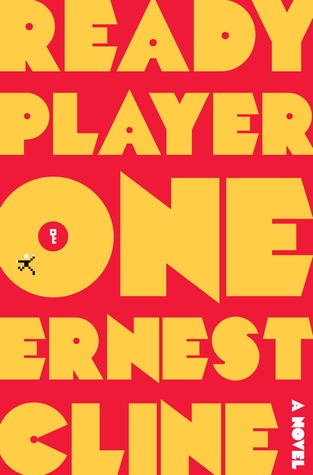 Ready Player One is one of the best times I've had in literature since I was a kid. Filled with adventure, danger, mystery and even a touch of romance, Ernest Cline is clearly dealing with subject matter near and dear to his heart. Imagine a future where most people spend their waking hours inside a virtual video gaming world that looks real because it renders its hi-res imagery directly onto your retinas. This book will immediately resonate with those born in the 70's and 80's and fans of retro gaming, sci-fi, anime and John Hughes films.
Ready Player One is one of the best times I've had in literature since I was a kid. Filled with adventure, danger, mystery and even a touch of romance, Ernest Cline is clearly dealing with subject matter near and dear to his heart. Imagine a future where most people spend their waking hours inside a virtual video gaming world that looks real because it renders its hi-res imagery directly onto your retinas. This book will immediately resonate with those born in the 70's and 80's and fans of retro gaming, sci-fi, anime and John Hughes films.
The story is about a 16-year kid named Wade Watts living in 2044 and all hell has finally, totally and completely broken loose due to a Recession that turned into an endless Depression throughout the world. We have depleted most of our natural resources to the point where we’re just about out of everything we need to survive. Very few true cities exist any longer and humanity is about 25 years away from devolving into Thunder Dome. There are still some semblances of normalcy, such as running water, electricity, and public school but for Wade the latter is more like a nightmare. After the death of his mother, Wade has to live with his junkie aunt in The Stacks, a rickety network of trailer homes projects vertically stacked in order to conserve space. However, as with any good story, there’s a spark of hope and it exists within a virtual reality that’s become most people’s only reality called The Oasis. The Oasis (and yes, it’s an acronym) is accessed by the user via haptic gloves and a visor similar to those seen in Caprica. What? You haven’t watched Caprica? Yeah, I know. You and lots of other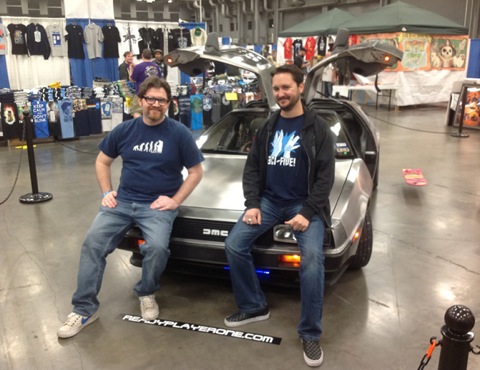 people Anyway, The Oasis is what the name implies – a magical escape across the landscape of the digital created by the now deceased eccentric multi billionaire, James Halliday. Halliday, a teenager in the ‘80s, was obsessed with the culture of his youth, especially all things pertaining to video games. Inspired by the common practice of creating Easter eggs, or hidden secrets with video games, upon his death Halliday released a video announcing an Easter egg hidden somewhere within the massive world of The Oasis. Generally, these hidden prizes only held value to the hardcore gamers who weren’t satisfied until they’d successfully unlocked every part of a given game, but the prize for finding Halliday’s Easter Egg (as it became called) was his entire fortune, in excess of 240 billion dollars and complete ownership of The Oasis itself. Now the race is on to find the Egg and Gunters (Egg Hunters) have come out of the woodwork to join the hunt. A privatized faction of elite Egg Hunters called the IOI are hell-bent on monetizing The Oasis and Wade has to do everything in his power to stop them by getting to the Egg first. Wesley Crusher…I mean Wil Wheaton’s reading of Kline’s debut novel is heartfelt, colorful and down right cool in part because you know he loves the material, but also because of his natural sardonic charm. And if you listen closely, you’ll note that he even makes an appearance in the book himself. If you love the 80’s, video games, sci-fi and puzzle solving you’ll absolutely love listening to (or reading) Ernest Kline’s Ready Player One. You CANNOT have full nerd certification without complete consumption of this spectacular piece of contemporary fiction.
people Anyway, The Oasis is what the name implies – a magical escape across the landscape of the digital created by the now deceased eccentric multi billionaire, James Halliday. Halliday, a teenager in the ‘80s, was obsessed with the culture of his youth, especially all things pertaining to video games. Inspired by the common practice of creating Easter eggs, or hidden secrets with video games, upon his death Halliday released a video announcing an Easter egg hidden somewhere within the massive world of The Oasis. Generally, these hidden prizes only held value to the hardcore gamers who weren’t satisfied until they’d successfully unlocked every part of a given game, but the prize for finding Halliday’s Easter Egg (as it became called) was his entire fortune, in excess of 240 billion dollars and complete ownership of The Oasis itself. Now the race is on to find the Egg and Gunters (Egg Hunters) have come out of the woodwork to join the hunt. A privatized faction of elite Egg Hunters called the IOI are hell-bent on monetizing The Oasis and Wade has to do everything in his power to stop them by getting to the Egg first. Wesley Crusher…I mean Wil Wheaton’s reading of Kline’s debut novel is heartfelt, colorful and down right cool in part because you know he loves the material, but also because of his natural sardonic charm. And if you listen closely, you’ll note that he even makes an appearance in the book himself. If you love the 80’s, video games, sci-fi and puzzle solving you’ll absolutely love listening to (or reading) Ernest Kline’s Ready Player One. You CANNOT have full nerd certification without complete consumption of this spectacular piece of contemporary fiction.
PS. Take a look at Ernest Kline's visit to gaming com… And Sepiawolf’s rendition of The Stacks


The story is about a 16-year kid named Wade Watts living in 2044 and all hell has finally, totally and completely broken loose due to a Recession that turned into an endless Depression throughout the world. We have depleted most of our natural resources to the point where we’re just about out of everything we need to survive. Very few true cities exist any longer and humanity is about 25 years away from devolving into Thunder Dome. There are still some semblances of normalcy, such as running water, electricity, and public school but for Wade the latter is more like a nightmare. After the death of his mother, Wade has to live with his junkie aunt in The Stacks, a rickety network of trailer homes projects vertically stacked in order to conserve space. However, as with any good story, there’s a spark of hope and it exists within a virtual reality that’s become most people’s only reality called The Oasis. The Oasis (and yes, it’s an acronym) is accessed by the user via haptic gloves and a visor similar to those seen in Caprica. What? You haven’t watched Caprica? Yeah, I know. You and lots of other

PS. Take a look at Ernest Kline's visit to gaming com… And Sepiawolf’s rendition of The Stacks

